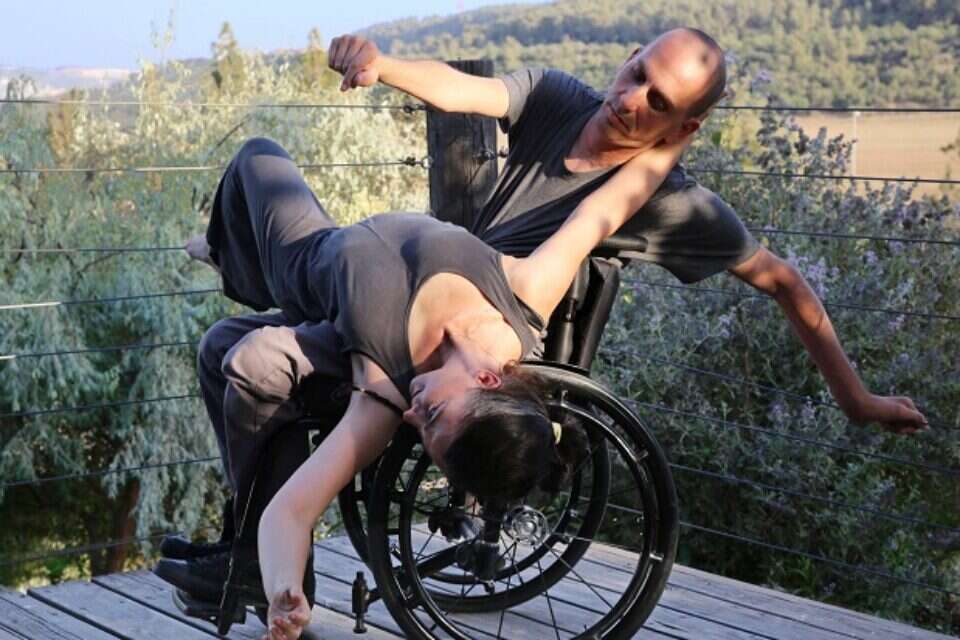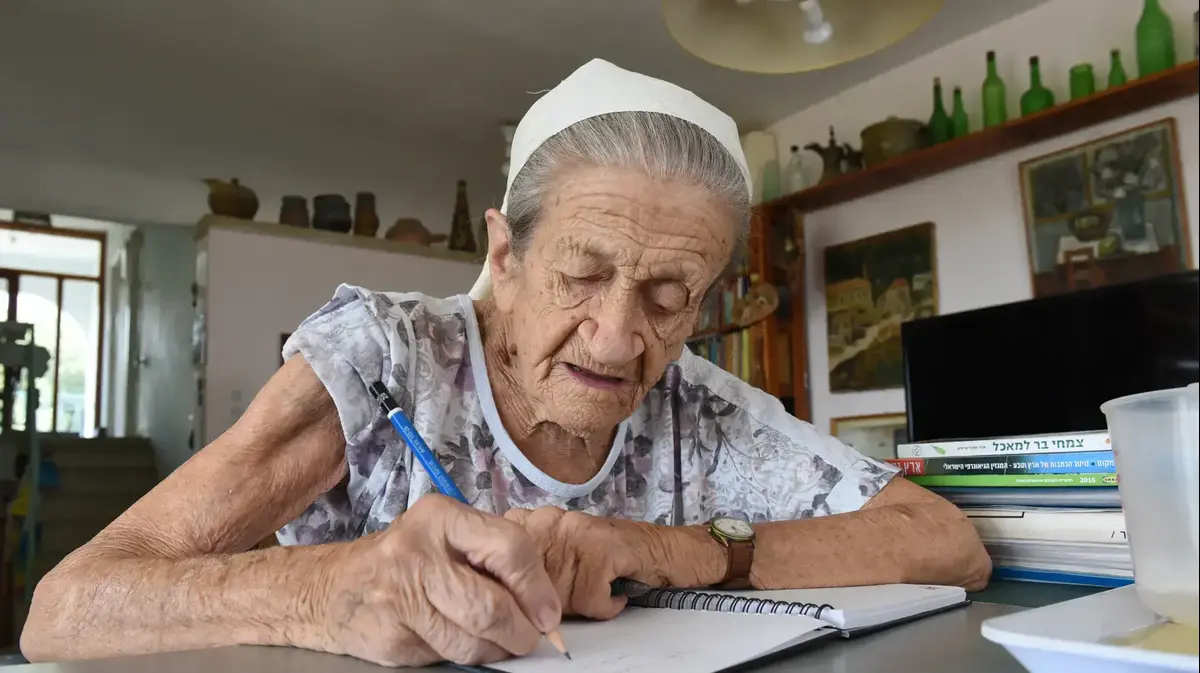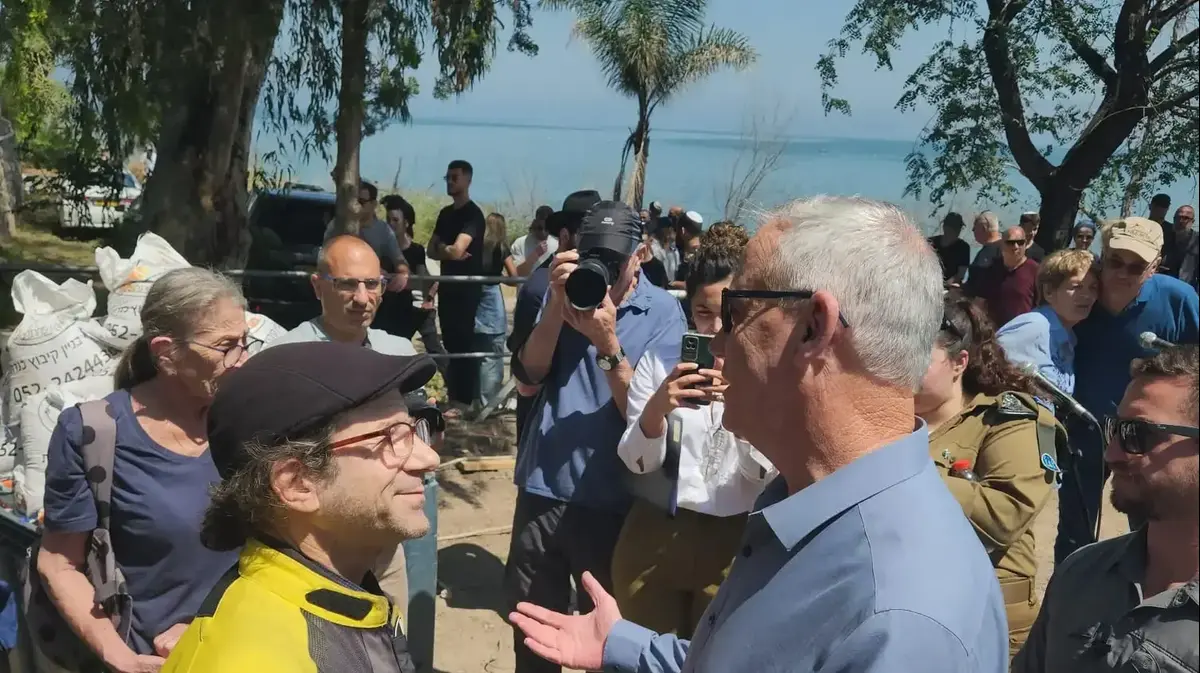For 30 years, Noa Wertheim and Adi have been dancing their lives together, on stage and as a couple.
Three decades of a common path that gave birth to "Vertigo", the dance troupe that won prestigious awards in Israel and abroad, represented Israel at prestigious international festivals - and established its status as a contemporary ensemble with an agenda.
Wertheim and Shaal met in the band Tamar, and the love between them continued on stage, when the duo created a duet called "Vertigo".
The rest is engraved in history.
"Adi led the determined move and I flowed with it," Wertheim admits.
"I admit I did not have the vision and understanding that everything would develop into a band of this magnitude, as Adi had."
The band will celebrate its birthday with three days of events at the Suzanne Dellal Center (June 17-15), dedicated to the values that lead its vision: Environment - with the mythical show "Phoenix Birth", which will be held outdoors with veteran dancers alongside young dancers;
Art - with the show "Orchard", a work by Wertheim, alongside an artist meeting with her;
And company - in the show "Balance Power", which combines the work of professional dancers with dancers with physical disabilities.
Wertheim (56), the artistic force behind Vertigo, established the "Vertigo Ecological Art Village", on Kibbutz Netiv HaLa in the Ella Valley, which offers a meeting place between art and the environment. She is also responsible for the "Balance Force" project.
Founder of Vertigo, Noa Wertheim.
"Together like a tribe", Photo: Eldad Rafael
"Twenty years ago my mother passed away, and we are left with four sisters. Adi, who was already the CEO of Vertigo at the time, told us 'I will give like a tribe that is something whole.'
This comment sowed in me the understanding that living together in a cooperative, like a tribe, is the right thing to do - and we just started to apply that to the band as well.
"We did not quite know what it would look like, but we knew we wanted to do better with the world in our social and ecological endeavors, so we established the art village 15 years ago. It was built slowly, and now I can sit and say we did something bigger than we could imagine.
"We have a slogan: ART.HUMAN.NATURE, and the idea is to do good with all these sections. We live on Earth, and nature is also an inspiration in our creations. We are guests here for a moment, and confused to think we own this globe. It is important to me to be modest and ask questions. Through art and movement, without words. Communicate through the language of dance. "
"Vertigo Balance Force", which brings together people with - and without - disabilities, and holds annual programs and workshops alongside performances in Israel and around the world, was founded by Wertheim and Shaal in 2000. The project is run by Chai Cohen and Tali Wertheim Agranyonic (50), Noa's sister.
"In the show I sat and cried"
In 2008, the "Vertigo Balancing Power" activity center moved to the ecological art village at Kibbutz Netiv HaLeh, where integrated groups come for joint dance work, along with land creation and ecological enrichment.
"After Adi and I founded Vertigo, we received an award from the British Consulate and went on a couple of weeks of training in London. That is, people with disabilities.
"In that show I sat and cried. It stunned me that a limitation leads to a place that purifies communication between people. At the end of the show we went to thank the creator and dancers and offered a man, who had not visited Israel before, to come and work with Vertigo. A few years later he left his band. Conduct workshops in the country.
"My sister Tali then volunteered to dance with people with disabilities in all sorts of places, and at the end of the workshop she said to me - 'I found'. I mean, she understood that it was her thing. "To, and the combination of the band's dancers with dancers with disabilities has become a large and significant major industry in Vertigo, for 20 years - to this day."
Tali: "I have been dancing since the age of 9, and I always felt that the body is the instrument, and that touch and movement are its expression. From the first workshop that Noa spoke, I came out with tears in my eyes. "Every day is fascinating for us. We do not think about what does not exist and what cannot be done - but stems from the existing and researchers."
Still, the limitation exists in people with disabilities, and it embodies by itself the "nothingness."
"We look at the limitation, but do not derive from it. Together with Chai Cohen, my partner, who himself sits in a wheelchair, we are engaged in management and creation. Because it only widens the gap - and there is nothing to do with this "nothingness".
"When a guy with amputated legs comes in, or someone who has no ability to move his hands, we ask what he does have. "It's something unique to our band. While in art, we allow the audience to see people with a physical diversity of cast, who dance and run like a whole life on stage."
What are the typical reactions you get to this from the audience?
"Wow's reaction. At first you see people with different physical abilities, disabilities, but slowly, during the show, this thing dissolves. Not because we want to make it go away, but because the unique limitation has become another statistic - no more and no less.
"We have a diverse cast aged 40-30 with physical diversity. People with crutches, people in wheelchairs, there are also amputated two-legged. Unfortunately, the majority are without a background in dance because there are not many frames that mentor dancers professionally. I mentor them, and then "If they want to continue in a band or another ensemble - they are considered professional dancers."
Where do dancers with disabilities come from?
Most of the dancers who come received their training at our school, in alternating ensembles. The show we will present at the 30th anniversary is a contraction of the show we run all over the country, "Shape On Us". "To preserve the group. Six dancers will participate in the limited show, and nine will participate fully."
The band also has a healing act for dancers with disabilities, alongside the artistic element?
"I like the word 'healing' less because it has the connotation of something wrong that we correct. If there is healing, it is surely also for us, as facilitators. It is an unmediated encounter that shares the soul and consciousness with the physical body, and communicates it with more than one person. One. This is the most sublime thing for me in lowering the spirit to matter. "
Dancing with arthritis
Amir Ishhar and Meital Aharoni.
"On a journey to discover the very rich movement language", Photo: Ran Yehezkel
Amir Ishhar (53) and Meital Aharoni (48) are two of the dancers in "Balance Force".
Ishhar comes on his own from the world of showbiz, after learning to play Nissan Lane and living the stage before they had to amputate both of his legs due to an illness that affected their blood flow.
"About ten years ago, small collaborations began between me and Chai and Tali," he recalls.
"In 2017, I signed up for the first cycle of their teacher training track for contact and improvisation. The bond between us deepened very deeply, professionally and socially, until we became a kind of family."
The disease struck Ishhar shortly after he was discharged from his military service, and already in his acting studies he had difficulty walking and standing.
At the beginning of the fourth decade of his life, the disease became so complicated that he had to amputate both legs above the knee, six months apart.
"Because I've been in a wheelchair for 20 years, I have often found myself part of the supporting array of art, rather than the stage itself. More in the roles of producer, stage manager, sound operator and such. The show. So I auditioned - and I was accepted. "
The dance on stage, with the wheelchair, heals for you?
"Yes and no. Art is generally therapy for the mind, and if artists did not make art - they would freak out. It is not a stable or easy profession to choose wisely, but a profession you go to because otherwise you would be miserable. In general I do not run the world with 'I am limited, and behold, I have proved to myself and to you that so and so ...'
"I admit that at the beginning of my journey in the wheelchair I had to check the boundaries and see how much one could get out of this seemingly-limitation. .
"What I did not exhaust was dance. I always loved to dance, but after the army, when I started having problems with my legs, I did not think I could dance again. My perception was that if I could not move my legs - I could not dance. The amputations, beyond the fact that there was shock and struggle , Were also a great blessing, because I actually rediscovered the dance.
"Since the rediscovery I have been constantly on a journey to discover the very rich movement language that can be done in a wheelchair. How to work with the chair as a partner. I also discovered that I have a 'luxury' disability because I have functional knees - so I can easily get off the chair and work on the floor "I'm in endless research, and in that sense Vertigo's show speaks volumes to me."
For Meital Aharoni, who lives in Petah Tikva, the world of the stage was completely foreign, until she decided to dare and fulfill a dream.
"I have known Tali and lived for 20 years, because I belonged to the first group in the country of contact and integrated improvisation. When I was offered to take part in the band, at first I was reluctant because I am less of a stage person in terms of movement.
"But I wanted to challenge myself and feel what it was, and as soon as I auditioned I found myself in a band. I come from the world of non-formal education, delivering lectures and doing group facilitation, and currently also telling my personal story in schools.
"I have had rheumatoid arthritis (JIA) since childhood. I stopped walking at age 4, and my skeletal aggravation developed. My injury is to joints all over my body, which do not open all the way. I have been in a wheelchair since I was 8, after trying all kinds of treatments and medications. "Chronic pain and severe joint damage and is managed in a motorized wheelchair."
Have you had any previous attraction to the world of dance?
"I was never interested in dancing, more in painting and writing, but I was curious about my body. For years, as a teenager, I spent time in the room in front of the mirror and danced to the sounds of rhythmic music from the radio. "Music has always been a part of my life. At Improvisation I was embarrassed at first - but I coped and grew out of it."
Is there any therapeutic act in your participation?
"Honestly, less. I did not need that self-proof, but it was important to me that there be something in the show that would resonate and hit waves socially, visibly on stage. That it would seem normal for the band to have a variety of dancers. It excites me over and over again. "I had physical and emotional challenges because the work on the dance is very demanding. It comes with a lot of pressure because it is a professional show, not just to show that 'there are disabled people on stage'. It is great and challenging."
Maya19.10@gmail.com
Were we wrong?
Fixed!
If you found an error in the article, we'll be happy for you to share it with us









